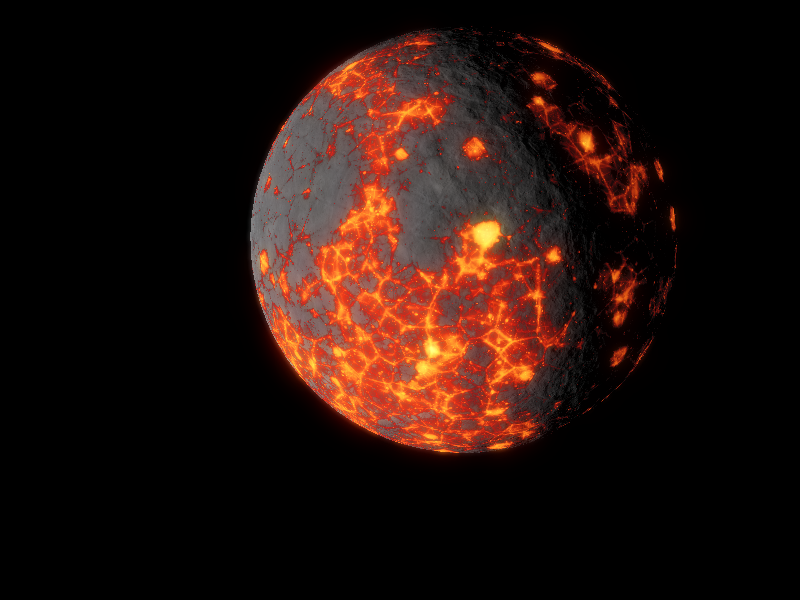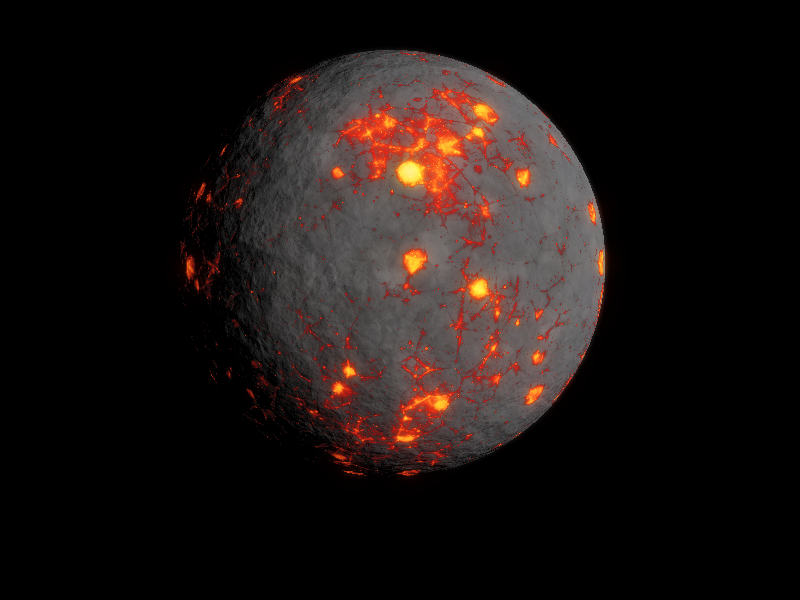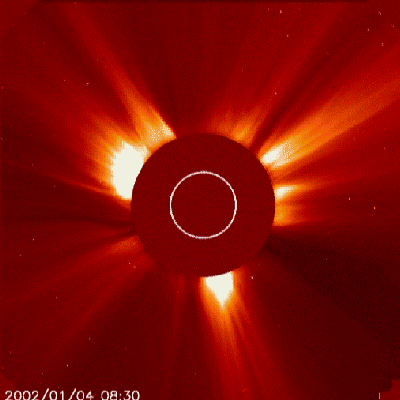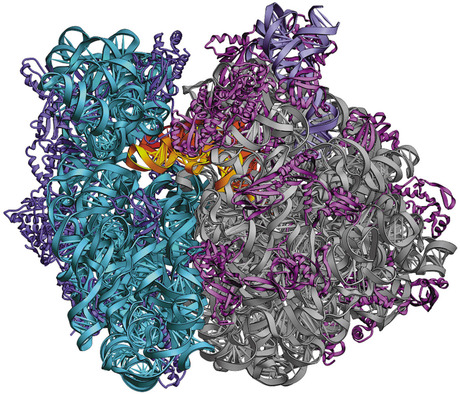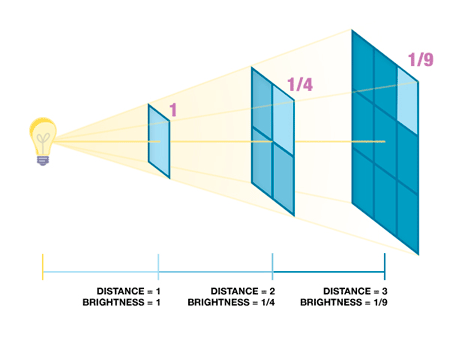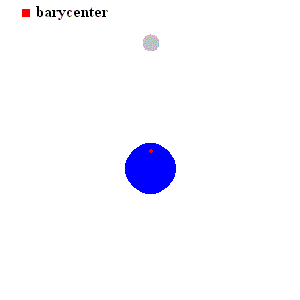WARNING, THIS TOPIC IS VERY EXTENSIVE !
[and requires further study]
[and requires further study]
This post is a thought experiment, and does not properly reflect the canon biochemistry of Paart
Just remember what elements makes up your planet's crust, what kind of weather favors some to appear as some kind of mineral. What is your star light output and so on. For instance, Paart has lots of Titanium, Silicon, Aluminum and Bismuth, so expect them to be all around
It is a cool day of summer, the seas gently roar as the waves break at the rocks made of titanium silicon carbide bearing plenty of anorthite... The wind take away the gas and fume from the few active volcanoes at the horizon. Nearby some ancient rocky structures rest to the sun, those lifeless buildings once harbored the bacterial ancestors of all Paart's lifeforms, 1 and half feet of continental rise doomed them to starve eons ago, and now some of their offspring thrive to colonize the land along with few algae and biotic paste made of photosynthetic bacteria.
As the waves wash out the black sand of titanium carbide at the beaches of Paart, something moves, it is not the wind, not the water, is a living being.
It's slimy dark skin with yellow bright spots is washed out from it's eggshell and sand, it barely knows it is alive, the newborn salamander-looking hexapod is a female, she made an unimaginable effort upon birth, she may now rest under Vol's light.
The world is now 4,2 billion years old, and to then, all of life's history have been told in Paart's seas...
She is awake, after resting for about 5 hours at the sun, let's give her a name... Lisa.
Lisa's species and their close relatives have been laying eggs in the beaches for safety from the fish and other predators, like turtles do. But Lisa, her brothers and sisters, cannot return to sea yet, it is a too savage world for their delicate existence, it is why they're born with lungs and filters, to breathe both air and water.
By air I mean carbon dioxide, and small amounts of ozone and oxygen gas.
Lisa move around her triangle-shaped head, she cannot see, the sea haven't washed her nicely, she opens her indigo-colored mouth (tinted by her magnesium porphyrin IX rich metabolism) and sweep her long tongue all over her head again and again, until she managed to catch the egg membrane blindfolding her, her first meal, although it was supposed her to feed from the algae and biotic paste around, which is rich in oxygen compounds for her young metabolism...
Atmospheric oxygen and oxygen bonded on this algae is enough to execute some basic tasks in her body, although the main source of it still the carbon dioxide in the atmosphere.
The compound NaBiO3 is a strong oxidizing agent that can be used as energy source in other reactions like breaking food. This dual diet of algae and meat can ensure that the young will not compete with adults for food and that adults don't deplete the food supply when it is low.
Her bright green eyes, which ports a pentagonal pupil muscle, finally see the world, her species along with several predatory animals need to distinguish their prey among the colorful algae and coral, some animals try to be invisible tinted in ultraviolet pigments, but she can see them, she has 4 types of receptors, ~730nm red, ~665nm orange, ~535nm green, and a special rod with Bismuth-based pigment.
Lisa at the sunset, made by me
What is the sky color for her? And what is the sky color if you, an human explorer could be sat on a rock there?
If Paart's atmosphere is similar to that of the Earth in an overall sense, it is certainly blue for a human, and a copper-grayish gradient for Lisa, since she has no blue cones, she can't see blue, thus, the sky for her is made of the few yellow and red photons that manage to go through.
If a human standing beside could see as she sees, although the true horizon stands 4.8km away, it couldn't be really seem, for the current fauna, Paart is a hazy world. Why? Because short wavelengths like ultraviolet scatters too much in the atmosphere, which means that light bounces and refracts on the particles way more than ordinary visible or radio, seen by us as a sort of haze that blends the clouds to the sky, cutting the visibility down to 2km at the best estimate.
Some altered images to simulate what Lisa sees...
As well, if some creature could see in the infrared spectrum, then it would see crystal clear, with the effect that gases like carbon dioxide, methane and ozone would seem pitch black depending of the wavelength band you're in, the sky would definitely be dark as night because there is almost no scatter to longer wavelengths.
Infrared, unlike visible and UV light, doesn't depends on the sun or artificial sources to be present, that's why it is so useful in night googles used in modern warfare, some creature seeing in infrared could easily track their preys' body heat.
Then why not we evolved to see in infrared? Or ultraviolet? Why a great slice of animals with eyes sees in the visible light or it's extremes (near UV and near IR)?
In fact, it is a matter of simplify life, to make less effort to stay alive.
Ultraviolet light is harmful to life for its high energy photons, often bringing photo-dissociation to our sugars and DNA. Although today some animals see in ultraviolet is rather unlikely that early life with eyes use ultraviolet. It hits our molecules too hard, unless you have some serious biology to deal with it, like melanin that re-irradiates it as heat.
This might seem slightly off-topic, but take a microwave, or that parabolic antennas that are made not from entire piece of steel but from a sort of grid. The microwave door is covered with a grid, to block microwave wavelengths from going through and cooking your eyes, the grid on the antennas does reflect radio wavelengths back to its receptor.
Now here is the thing, red light is around 700nm in wavelength, 700nm is a big structure, but is achievable due our body size, we can build a sensitive structure that is this wide and be strong enough to support the energy of red photons, but if we wanted to see infrared like at 900nm or at 2μm, we would need a way bigger structure to catch it, if we wanted to see in radio waves, we would need the space between out photo-receptors to be 1-5mm wide like the antenna's grid, and because our eyes are not that big, we wouldn't be able to catch enough light of those infrared radiation so it is useful to us, and to nature, what is not useful to a living being is lost, it is wasting too much energy to have few feedback.
And also, our Sun emits lots of green light, if light help our perception of the world, then is logical that we would use it to increase our survival chances. See Color Vision.
For ultraviolet vision is a kinda funny story, there is a two way down to deal with it, either you absorb it and re-irradiates it as heat, or do you reflects it back to the environment, ie, you glow in ultraviolet.
Plants that produces those kind of pigments that are not perceivable I'm visible light but glow in ultraviolet suffer two effects, they are ignored by those with near IR and Visible vision, but preyed by those with UV vision, and the ones that happen to produce it where it can be spotted and useful, like pollen and fruit UV markers can thrive and pass those genes on.
Small animals are more likely to see in ultraviolet because the amount of space needed to support a certain amount of data is smaller, if your eye is 1/2 the size of a human eye, your retina is 1/4 the area, tho at the same proportions of human cones and rods you would see 1/4 of the light we see, unless you raise this cone/rod density changing your structures to see shorter wavelengths, and it wastes less energy to your body size.
That is why Lisa and her relatives have yellow spots, secretions of sulfur and phosphorus compounds are yellowish and bright in ultraviolet, those and other kind of salts help retain water on the creature's skin, and it's secretion of ortho-phosphoric acid grants a protective coating against the dry weather of the surface and harmful bacteria, this acid syrup is pretty weak but enough to cause some burns to human skin if handed unprotected.
That explains the blue gap in her sensors, the sea is blue already, her species and other predators don't need that useless input of data, but they need green because they feed on algae when prey is not around, red and yellow help see their relatives and mates with ease.
As the rocks are darker they absorb and re-irradiates IR with ease, thus, seeing in IR would not be really advantageous, since a creature could easily blend their heat signature into the environment (like in movie Predator, but more accurate).
Yet, if her photoreceptors are made of bismuth compounds then, as bismuth-based pigmentation is stimulated through ultraviolet radiation, the bismuth nuclei of the pigments gets excited and emits it's spectrum back, ie, glow inside the eye, as those wavelengths are in the green, orange and red bands, it works as photomultiplier for UV light into visible spectrum.
For now, it is all.
- M.O. Valent, 17/05/2019












